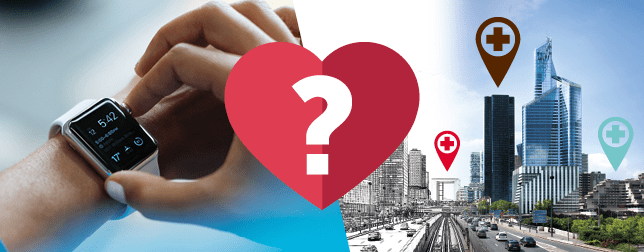BIM meets WT (Wearable Technologies) – Is it love?

How Wearables will support Architecture, Real Estate and the development of Building Infrastructure
At first glance wearables and the real estate industry are miles apart from one another. Look again and you will see that new collaboration trends and standards are bringing these two worlds together faster than you might think. BIM (Building Information Modeling) meets WT is a big trend that hasn’t been on the radar of tech leaders until now. The software, engineering and real estate business are some of the most innovative industries and are already investing heavily in the combination of Virtual Reality (VR) and Augmented Reality (AR) solutions to visualize their 3D infrastructure models.
Upcoming innovations by Microsoft HoloLens, HTC Vive, Google and Facebook, companies like Autodesk, Trimble, Topcon and Nemetschek Group are building significant groundwork for an amazing digitalization trend in real estate, without there being any previous connection to wearables. The Building Information Modeling method will not only be beneficial for big engineering firms with thousands of employees, but also for those with small teams of 5 to 10 engineers.
What is BIM?
We had the chance to speak with Dr. Josef Kauer, President of the BIM World Organization, to get further insights.
Could you please tell us what the purpose of BIM is?
BIM captures the whole lifecycle of real estate, an industrial building or the infrastructure around it – from the scratch to the maintenance, and over the next decade. Before anyone starts to work in the real environment, the whole project is captured and designed in 3D, showing all of the details. That means every cable, every element and even the energy consumption is captured by a collaborative database. The database is then able to playout all of the features into a 3D model for an amazing visualization with details that have never before been captured virtually.
What do you think is the benefit and the impact of wearable devices on the industry?
Some years from now, imagine an electrical engineer in a building that was designed and built via the BIM standard. He is able to see all of the cables in the walls or any other required infrastructural information via AR glasses, like the Microsoft HoloLens. This is a huge benefit and will save a large amount of money where the maintenance of buildings is concerned.
Besides augmented reality, where else do you see wearables providing additional benefits?
To answer that question, we will have to go a bit deeper into the topic of infrastructure. Indoor positioning or active light animation for the simulation of retail situations, or sensor driven energy saving etc. are all applications, which will be enabled by such an entirely digitalized building.
Many thanks for your thoughts on this topic. We are looking forward to seeing all of those amazing technologies and innovations at the first BIM World tradeshow in Munich at end of November. Don’t forget to mark this on your calendar. You will see groundbreaking innovations, from Visualization with HoloLens or HTC Vive to the 3D printing of components in the building process.
